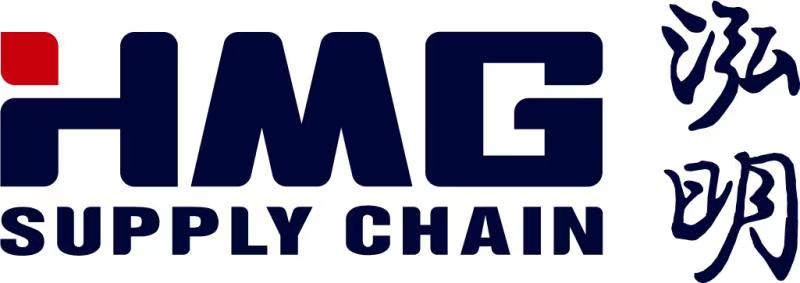
01
Market Trend(Mar. 31)
Another big power unveils independently developed lithography machine
Recently, Zelenograd Nanotechnology Center, located in Moscow, announced that Russias first 350nm lithography machine has been developed and is gearing up for mass production. This achievement marks a crucial step toward semiconductor self-sufficiency of Russia and has realized the independent production of key lithography equipment. Additionally, the center is working on a 130nm lithography machine under a second government contract, aiming for completion in 2026. With its achievements, Russia shows its firm determination in developing independent controllable semiconductor technology and has made remarkable results.
Unlike conventional mercury lamps as light sources, Russias 350nm lithography machine employs a solid-state laser, which features higher power, better energy efficiency, greater durability, and a narrower light spectrum for enhanced precision. In addition, the machine features an expanded 22mm × 22mm working area and supports wafers up to 200mm in diameter. These new technological innovations enable Russia’s lithography machines to present unique competitiveness.
Although the 350nm process is comparatively mature, it still meets the demand of producing chips used in automotive, energy, and telecommunications sectors. Russia plans to gradually reduce its dependence on imported equipment by developing its own lithography machines, thus enhancing its position in the global semiconductor industry chain. In addition, Russia also plans to achieve local making of 28nm chips by 2027 and 14nm chips by 2030.
Comments: Russias Zelenograd Nanotechnology Center completed the development of 350nm lithography machine and is ready for mass production, which is an important result of its strategy of seeking technological independence in the semiconductor field. This breakthrough not only helped Russia reduce its dependence on imported equipment and strengthened its position in the global semiconductor industry chain, but also injected new impetus in the diversified development of the global semiconductor industry. From the technical point of view, Russia adopts solid-state laser as the light source innovation, which provides a new idea for the technical development of lithography machine. However, the marketing of Russia’s lithography machines still faces a number of challenges, including technical maturity, market acceptance and compatibility with the existing industrial chain.
02
Company Trend(Mar. 31)
TSMCs 2nm capacity leaps forward greatly: Kaohsiung plant started mass production in advance, with orders scheduled until 2027
On March 31, TSMC held a 2nm production expansion ceremony at Kaohsiung Nanzih Technology Industrial Park to announce its major breakthrough in advanced technology. According to the latest news, TSMC has made smooth progress in its 2nm process node and is expected to officially start mass production in H2 2025. In particular, the construction of Kaohsiung plant went beyond the expected schedule and will start mass production in advance. In addition, the orders of 2nm process accepted by TSMC have been scheduled to 2027, showing that the market has strong demand for the technology.
TSMCs 2nm process technology employs Nanosheet transistor structure and offers higher performance and lower power consumption compared to the existing FinFET architecture. According to the data released by TSMC, the speed of 2nm process chips is expected to increase by 10% to 15% at the same power consumption, while the power consumption can be reduced by 25% to 30% at the same speed. In addition, its transistor density increases by more than 15%. This technical breakthrough will meet the market demands for high-performance and low-power consumption fields such as AI, 5G and HPC.
In terms of capacity, TSMCs 2nm production bases include Hsinchu Baoshan plant and Kaohsiung plant. In particular, Baoshan plant is expected to take the lead in production in H2 2025, and Kaohsiung plant plans to advance production within 2025. The monthly capacity of the two plants is expected to rise to 50,000 units of wafers, with a maximum design capacity of 80,000 units. Its Kaohsiung plant will continue with a 3-5 phase expansion plan, with a total investment of NT$1.5trn.
Although its 2nm process has not yet been formally mass produced, the market demand is already rising sharply. Tech giants, including Apple, AMD and Intel, have already contacted TSMC and are expected to adopt 2nm process in their consumer products. According to the news of the supply chain, the 2nm-chip orders accepted by TSMC have been scheduled after 2027. In addition, TSMC plans to provide tape-out services for Intel’s 2nm chips in 2025.
Comments: TSMC started mass production of 2nm chips and expanded its production capacity of the same process sharply, which not only reflects its technical strength but also shows the strong demand for advanced process in the global semiconductor market. The high-performance and low-power consumption features of 2nm process chip give it significant application potential in emerging areas such as AI, 5G and HPC, which will further consolidate TSMCs leading position in the global semiconductor market.
From a market perspective, the orders accepted by TSMC are scheduled to 2027, indicating that the demand of 2nm process chips is far greater than expected. This will not only bring significant revenue growth for TSMC but also provide powerful impetus for the development of the related industrial chain. However, this may intensify competition in the semiconductor industry and drive other manufacturers to accelerate technology development and capacity expansion. In addition, TSMCs expansion plan at its Kaohsiung plant will not only help increase its production capacity but also create thousands of high-paying jobs to boost the local economy. This win-win result will bring more opportunities for cooperation between TSMC and the local government.
03
Company Trend(April 02)
Nvidia stock tumbles as the export of its chips to be restricted
On April 2, Nvidia’s stock price declined sharply in after-hours trade, mainly due to increased market concerns about restrictions of export of its chips. In addition, US President Trump’s unveiling of sweeping reciprocal tariffs on the semiconductor supply chain further raised broader concerns about Nvidias business.
According to the report of Wall Street Journal, the Trump administration plans to tighten chip export rules in response to Nvidia’s AI chips entering the Chinese market illegally through third-party distributors. This policy could result in Nvidia losing revenue in the Chinese market as much as US$4bn to US$6bn. The Trump administration announced to impose reciprocal tariffs of 34% and 32% on imports from Chinese mainland and Taiwan, respectively. As Taiwan and Chinese mainland are the main export destinations of Nvidia GPUs, these tariffs may increase the procurement cost of servers using Nvidia GPUs, thus discouraging the need for AI chips.
Market concerns about the US economy and uncertainty about Trumps tariff policy have also led to a decline in investor risk appetite, which in turn affects Nvidias stock price. Nvidias stock price declined by 4.7% in after-hours trading on April 2; other chipmakers’ stocks were also affected, for example, AMD’s stock price went down by 4.5%, Broadcom’s down 5.2%, and Micron‘s down 6.4%; and TSMC, the major foundry of Nvidia, also dropped by 4.8%.
Comments:The plummet of Nvidia’s stock price reflects the markets concerns about its chip export restrictions and uncertainty of the macro economy. Although Nvidia holds a leading position in the AI chip market, the US export restrictions and uncertainty of the tariff policies pose significant challenges to its business. The US governments trade policy not only affected Nvidias market performance but also had a chain effect on the semiconductor supply chain as a whole.
In the long run, Nvidias technological strength and market position in the AI field remains strong but its stock price may continue to be subject to fluctuations in macroeconomic and policy factors in the short run. In addition, as Chinese mainland and other countries advance in semiconductor technologies, Nvidia may face more intense competition in the market. Nvidia needs to strengthen technological innovation and market expansion while responding to the export restrictions and tariff policies so as to consolidate its leading position in the AI chip market.
04
Market Trend(April 02)
US to suspend chip subsidy program, downsize 80% employees
On April 2, according to several media reports, the CHIPS Program Office (CPO) has slashed approximately 80% of its employees due to the Trump administrations policy changes to the CHIPS ACT. The CPO was established in 2022, aiming to supervise the allocation of semiconductor subsidies and the advancement of related projects. The layoff involved about 120 employees, with only 22 probationary employees retained.
Since Trump repeatedly said he would repeal the CHIPS Act, arguing that the subsidy policy under the Act was inefficient and advocating imposing tariffs rather than providing subsidies to attract the manufacturing industry back to the USA. The Trump administration also plans to renegotiate the signed subsidy agreement and remove the conditions related to trade union, laborers, childcare, and more attached by the Biden administration. The Trump administration is reviewing projects authorized by the CHIPS Act and may postpone some funding. The US secretary of commerce Howard Lutnick is considering suspending the subsidies promised under the CHIPS Act and instead expanding the 25% tax credit under the Act. However, the expansion of the tax credit still requires the approval by the congress.
A number of chipmakers have expressed concerns about the uncertainty of the subsidy program. For example, Samsung Electronics’ and SK hynix’s subsidy programs may be put on hold. Samsung was granted a subsidy of US$4,745mn, but it has not yet received such funds. Due to the policy adjustment, the stock prices of relevant companies fluctuated. For example, the stock prices of companies such as TSMC and Intel declined after the news came out.
The industry holds different views about the Trump administrations tariff policy. On the one hand, GlobalFoundries CEO supports a "belt-and-braces" strategy, believing that it will enhance the competitiveness of US chipmakers; on the other hand, economic experts warn that tariffs may lead to higher semiconductor prices and harm the interests of consumers.
Comments: The large-scale layoffs and subsidy policy adjustments by the CPO reflect the Trump administrations strong opposition to the CHIPS Act and its policy shift. This measure has not only raised concerns about the uncertainty of the subsidy program but may also result in delays or adjustments in investment plans for some companies.
In the short run, the Trump administration hopes to boost the return of the manufacturing industry by adopting tariff policies and enhance the competitiveness of the US chip industry. However, in the long run, such policy adjustments may pose many risks: 1. Frustrated confidence in investment: Uncertainty of the subsidy policies may delay or shelve business investment plans in the USA, which may affect the development pace of the US chip industry; 2. Global supply chain shock: US tariff policy may trigger global trade frictions, which further impacts the global semiconductor supply chain; 3. US technology leadership to be undermined: If the subsidy program is drastically cut or abolished, the US technological leadership in the semiconductor field may be challenged.
In addition, the Trump administrations policy adjustments may affect the relationship between the USA and its allies, including South Korea. The chipmakers of South Korea have expressed concerns about the uncertainty of the subsidy program and will reassess their investment plans in the USA.
05
Domestic News(Mar. 31)
Loongson 3C6000/D 2U server makes its debut! The homemade rate of its core components reaches 100%
At 2025 Zhongguancun Forum Annual Conference, Loongson 3C6000/D 2U server makes its debut. It adopts two new-gen Loongson 3C6000/D CPUs, based on Loongson Zhongke’s self-developed Loongson architecture instruction set. With 32 cores per CPU, the two CUPs of the server are equipped with 64 cores. It supports multi-threading technology and provides 128 logical cores, equipped with Loongson 7A2000 unique graphic bridge. The homemade percent of the core components of this server reaches 100%, and it can meet the computing needs of general computing, large data centers, and cloud computing centers.
Loongson 3C6000 series was scheduled to be released in Q4 last year, but it is still in the sample stage. It is expected to be productized and officially released in Q2 this year. It is based on the same LA664 architecture core as the well-known Loongson 3A6000. A single chip features up to 16 cores and 32 threads, supports two, four and eight-way direct connections. That is, a single system can achieve 128 cores and 256 threads.
With Loongson Coherent Link, the server can realize inter-chip interconnection and reduce access latency between chips by double. Dual chips can be packaged into a Loongson 32-core/64-thread server, and four chips can be packaged into a Loongson 64-core/128-thread server. According to the internal test results of Loognson, the performance of 16-core 32-thread 3C6000/S can be compared to that of Intel Xeon Silver 4314 (10nm/16-core/32-thread/2.4-3.4GHz/24MB/135W), and the performance of 32-core/ 64-thread 3D6000(3C6000/D) can be compared to that of Intel® Xeon® Gold 6338 (32-core/64-thread/2.0-3.2GHz/48MB/205W).
It is learned that six computer/server chips including Loongson 3A6000, Loongson 3C6000, Loongson 3B6000, Loongson 3A5000 (DA version), Loongson 3C5000, and Loongson 3D5000 have rated to the level II certification of "Safety and Reliable Test Results Announcement", and Loonson Zhongke, with the largest number of products passing the certification(accounting for 40%), ranks the first among the selected chipmakers.
06
Domestic News(April 01)
iSabers broke overseas monopolies and leads a new era in semiconductor bonding
At present when the semiconductor industry faces a development bottleneck in the “post-Moore” era, bonding integration technology is advancing profound changes in the global semiconductor industry landscape with disruptive innovations. As a domestic leading semiconductor bonding integration tech company, iSabers held the "Lead bonding future; innovation creates new industry landscape" offline technology innovation sharing conference on April 1, 2025, showcasing its latest breakthroughs in the field of high-end bonding equipment.
iSabers successfully developed bonding at room temperature, 3D heterogeneous integration and other "bottleneck” process technology and created four core equipment, covering advanced packaging, wafer level material integration and other cutting-edge areas, through independent innovation. The company received more than 30 orders in 2024, showing its strong competitiveness in the market.
Core competitiveness & tech breakthrough
The core competitiveness of iSabers lies in three key dimensions: 1. More than 200 licensed patents, hybrid bonding better than 100-nm alignment accuracy, normal temperature bonding, hot pressure bonding and other modular designs can meet diverse demands. 2. Compared with imported equipment, iSabers’ products have remarkable price advantage; it reduces the lead time to 6-8 months and provides 7*24h services. 3. iSabers works with partners of the industry chain to innovate and cultivates professional talents with top universities to inject fresh blood into the industry.
07
Domestic News(April 03)
Fudan team develops 2D semiconductor material, a milestone breakthrough
In the field of silicon-based chip manufacturing, as transistor size continues to shrink, processes and device structures have become increasingly complex, and Moores Law is approaching its physical limits, 2 dimensional semiconductors, with atomic-scale thickness, are seen as a key solution to overcome the technological bottleneck. After more than a decade of efforts by researchers worldwide, the industry has seen progress in the growth of wafer-lverl material of 2D semiconductor and also successfully developed high-performance device units. In the process of assembling these tiny "atomic-scale components" into a complete IC system, the problem of co-control of precision and scale homogeneity in processing seriously limits the improvement of system yield. This technical bottleneck caused the worlds record for the highest IC integration level remained in the hundreds of transistors, without crossing the technical threshold of functional processors.
After five years of R&D, the Fudan University team and Zhou Peng/Bao Wenzhong team of Shaoxin Lab successfully developed the worlds first 32-bit RISC-V microprocessor WUJI using 2D semiconductor material. WUJI microprocessor is based on single layer MoS₂ 2D semiconductor material, without relying on advanced EUV mask aligner. By employing innovative processing techniques and the open-source RISC-V instruction set, WUJI set a global record for 2D logic function verification, integrating about 6,000 transistors, achieving independent R&D of the whole chain from material, architecture to tape-out. The researchers successfully solved the problem of accurate coupling control of “metal contract-gate medium-BEOL”, verified the scale digital IC using atomic precision processing and characterization technology. The inverter has a yield of up to 99.77% and shows excellent performance such as single-stage high gain and off-state ultra-low electric leakage. After being tested rigorously with automated test equipment, its 1000-gate circuits can realize 37 kinds of 32-bit RISC-V instructions in series and fully meet the requirements of the 32-bit RISC-V integer instruction set (RV32I) at 1kHz clock frequency. Moreover, its integration process optimization and scale circuit verification results reached the best level in the world in the same period.
-
了解最新消息
如果你想先了解我们的最新消息,可以即刻订阅订阅我们
-







 返回新闻列表
返回新闻列表
